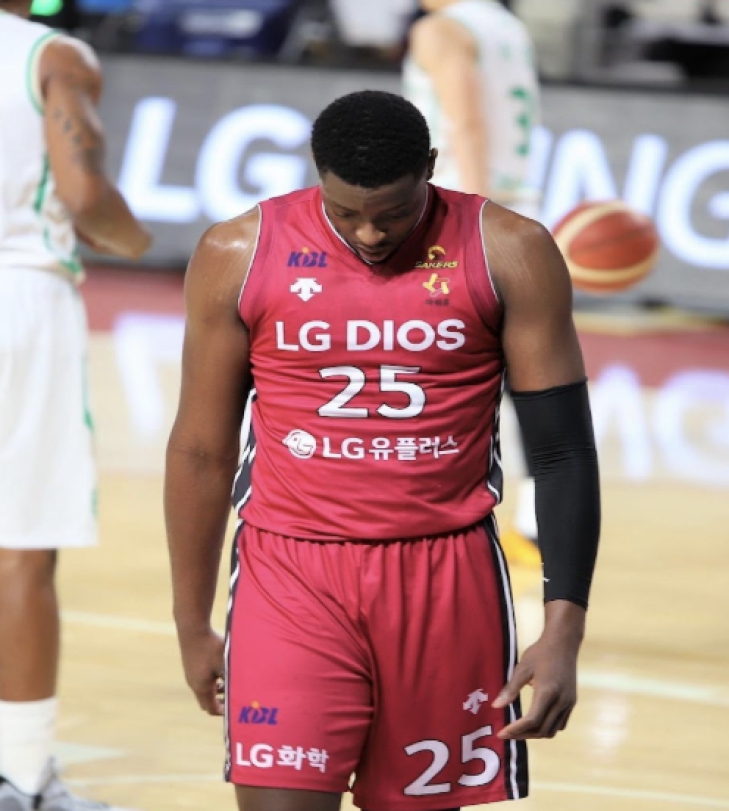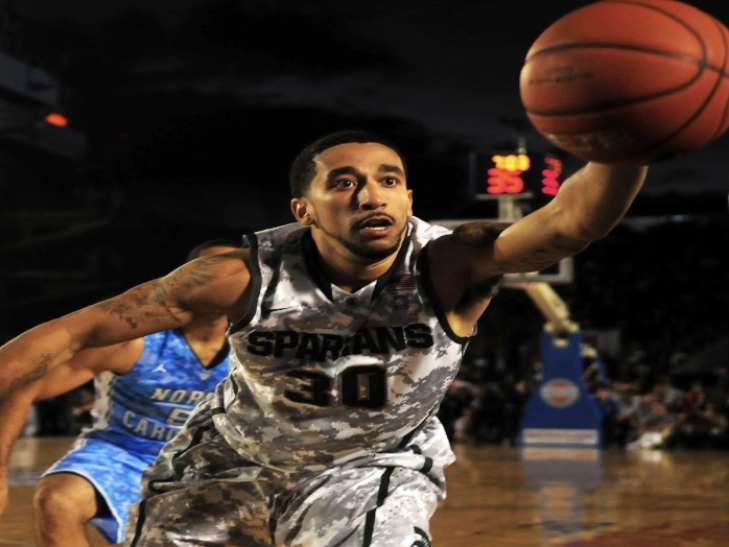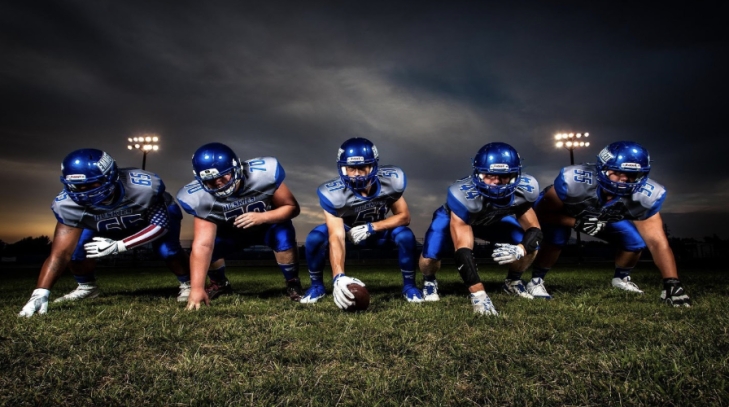
Committee Chairman
Basketballers with the Highest Number of Lawsuits
Basketball and many other professional sports expose players to a life of fame and fortune. Unfortunately, the life of luxury isn't without its drawbacks. These players need to live their entire lives walking on eggshells. They make one wrong move and risk public humiliation, a career fall, and a lawsuit. Our focus in this article is on lawsuits. What common lawsuits do basketballers face, and which renowned players have the highest number of lawsuits under their belts? Let's find out.
Professional Basketballer With The Highest Number Of Lawsuits
According to experienced lawyers like Adante Pointer, the industry's most common types of lawsuits are personal injury claims, contract dispute lawsuits, intellectual property disputes, and endorsement deal lawsuits. In some cases, renowned players have also been sued for harassment and assault. This is why players always need strong legal teams to back them and offer swift resolution to legal troubles. Here are some players who have had their fair share of lawsuits throughout the course of their careers.
Dennis Rodman
Dennis Rodman has had a lucrative career as a power forward in the basketball industry since he launched his career. However, he is also one of the most controversial figures in the sport, considering the fact that he has been sued seven times in twelve years. These cases were all due to one form of sexual harassment or another, and five out of the seven cases were sealed. He didn't face criminal charges because these were civil suits and he was forced to pay out compensations to his victims.
Latrell Sprewell
Latrell Sprewell was a shooting guard for many years, thanks to his remarkable skills. During his career, he got slammed with lawsuits on multiple occasions. At one point, he was sued by his partner, while in another case, the bank foreclosed on his yacht because he defaulted on his payments. However, the most notable case he was involved in was a dispute with the NBA and Golden State Warriors. In this case, Sprewell filed a lawsuit against both organizations after he was punished for attacking the Warriors head coach.
Allen Iverson
Iverson had a long and prosperous career in the NBA, but we can't discuss his history without mentioning some controversial moments. One such moment was when Jamil Blackmon sued him over his nickname "The Answer." According to Blackmon, Iverson promised 25% of the proceeds from every merchandise sold with that nickname. However, Blackmon lost the lawsuit because he could not prove the agreement's authenticity. Iverson was also sued over a bar fight that led to a $260,000 settlement. He had financially rough times but would later rebuild his fortune.
Ron Artest
Ron Artest, now known as Metta Sandiford-Artest, is an NBA small forward who launched his career in 1999. In 2019, Metta was sued by Dakdouk, a man Metta's wife had a head-on vehicle collision with that same year. Dakdouk wanted a payout but later dropped the lawsuit. Besides this lawsuit, Metta has also faced a few challenges in the NBA. During the 2004-2005 season, he was suspended by the NBA after fighting with a fan in the middle of a game. The case was taken to court, and he paid for his recklessness.
Conclusion
These are just a few of the many basketballers who were dragged to court or dragged others to court. In some cases, it caused damage to their reputation, while in other cases, the fallout was minimal.
4 Worst Injuries in Basketball History
Pro basketball provides much entertainment to those watching, but it can also be physically challenging to the players. The rigorous training required to stay in prime shape and release explosive bursts of energy on the court is no small feat. Players get injured on the court every season, some more devastating than others. This article will focus on the worst basketball injuries in recent history.
Gordon Hayward's Broken Leg
On October 17, 2017, Gordon Hayward, a power forward, was scheduled to start his debut game with his new team, the Boston Celtics. The game was against the Cleveland Cavaliers, and Hayward was just five minutes into the game when he suffered a devastating ankle injury after a failed dunk. He didn't land in a natural position, and this caused his ankle to break into two on live television. Hayward's season ended after that injury for obvious reasons, but he made a miraculous recovery and returned to the court during the subsequent season in 2018. Unfortunately, Hayward couldn't use personal injury attorneys in Ohio to sue anybody since the injury wasn't anyone's fault.
Shaun Livingston's Knee Injury
Let's take a trip down memory lane to Shaun Livingston's injury in 2007. Livingston suffered the most horrific injury of his career, which left almost every bone in his knee damaged. The injury happened while he was with the Los Angeles Clippers, playing a game against the Charlotte Bobcats. His knee dislocated after he attempted but failed a layup maneuver and landed awkwardly. He was rushed to the hospital, where doctors considered amputating his leg from the knee to save his life. Thankfully, they saved his leg, and he returned to the court after eight months of rehabilitation. Livingston went on to have a lucrative career until he finally retired in 2019.
Paul George's Broken Leg
During a summer scrimmage in Las Vegas, Paul George, a small forward who was playing for the Indiana Pacers, broke his leg in the most horrific way possible. It happened in 2014 when George slid into the base of the basketball court after he fell while running. The injury was an open fracture, which means the leg snapped in two, and the broken bone was exposed for everyone to see. People in the court were shocked by the gruesome nature of the injury. Fortunately, the doctors could correct the damage, and George could return to the court. Despite the injury, George returned for the final game of that same season after rehabilitation.
Isaiah Thomas's Hip Injury
The final injury on this list is the hip injury Isaiah Thomas, a point guard for the Boston Celtics, suffered during a game in 2017. It was the last game of the Eastern Conference. Remember that he initially injured his hip after colliding with another player during a game against the Minnesota Timberwolves earlier in the season. Instead of sitting out for full recovery, he continued the season until the finals, worsening his condition. While other players on this list were able to rebuild their careers after injuries, Thomas's case was more complicated. The Boston Celtics traded him off to the Cleveland Cavaliers, and while he continued to play, he never regained his original form or popularity.
Conclusion
These are just a few of hundreds of players who suffered severe injuries on the field. There have been many other cases over the years.
4 American Footballers Who Ruined Their Careers by Committing Crime
American footballers are super athletes with fans across the globe. These professionals spend years of their lives training and honing their skills to meet the demands of the sports. While most of them retire joyfully and honorably, some throw their careers away by getting into trouble with the law. There have been many terrible cases over the years, but we will focus on four athletes who single-handedly ruined their careers.
O.J. Simpson
Every criminal lawyer Indianapolis knows the bizarre case of O.J. Simpson. The infamous man was a talented professional footballer. He was a running back who got Hall of Fame recognition due to his impressive skills. However, his life drastically changed in 1994 when he faced accusations of killing his ex-wife, Nicole Brown Simpson, and her friend, Ron Goldman. During the trial, the prosecutors failed to establish his guilt beyond a reasonable doubt, leading to his acquittal.
Following his acquittal, he penned the book If I Did It: Confessions of the Killer. He detailed the murders of his ex-wife and her friend but made it seem like a hypocritical situation. O.J. Simpson eventually spent nine years in prison for armed robbery until his release in 2017.
Rae Carruth
From 1997 to 1999, Rae Carruth was a rising star in American football with Hall of Fame Potential. The wide receiver was one of the best talents of his time when he was playing with the Carolina Panthers. He secured the All-American honors in 1996 after playing professionally for one year. However, his career came to a dramatic end when Carruth paid a hitman to kill Cherica Adams, his pregnant girlfriend, over a domestic dispute.
The hitman, Van Brett Watkins, broke into the house of Cherica Adams and shot her four times. Among other charges, the court convicted Rae Carruth of conspiracy to commit first-degree murder. 2018 saw his release after serving eighteen years in prison.
Aaron Hernandez
Aaron Hernandez is another talented footballer who sacrificed his life. The NFL drafted this gifted athlete in 2010 after he played college football from 2007 to 2009. Unfortunately, Hernandez's life took a tragic turn when he was convicted of killing Odin Lloyd, his close friend, in 2013. In 2017, he was found guilty of the murder and sentenced to life in prison without the possibility of parole, throwing his talent and life away. Unable to live with the shame of what he did, Hernandez took his own life while serving his sentence.
Michael Vick
The last athlete on our list wasn't just careless and incredibly cruel. Michael Vick, the star quarterback for the Atlanta Falcons in 2006, faced serious career damage when he was exposed for having a dog fighting ring. Vick was charged with animal cruelty and other crimes related to the activities of the ring. Despite his conviction, Vick only completed 18 months of his 23-month sentence. Following his conviction, the NFL suspended Vick for two years, and the Atlanta Falcons dropped him. After his release, he eventually joined another team, but the stain of his crimes ruined his reputation forever.
Conclusion
Being good at the job doesn't always mean you are a good person or above mistakes. The professionals on this list put themselves in difficult positions and threw their lives away despite their incredible talents.
What Drives WWE’s Elite To Stay Focused During Their Signature Moves?
Executing a signature move in WWE isn’t just about athleticism—it’s about precision, timing, and absolute focus. One split-second lapse can turn a match, risking injury or missing the moment that electrifies the audience. Whether it's a high-flying finisher, a devastating slam, or a submission hold, WWE’s elite superstars must maintain complete concentration to pull off these maneuvers flawlessly. But how do they stay locked in at the most crucial moments in an environment filled with deafening crowds, intense pressure, and relentless competition? This blog post explores the ways that help WWE’s top performers remain focused during their signature moves.
Secrets Behind WWE Superstars’ Unshakable Focus In The Ring
1. Mastering in-ring awareness
Mastering in-ring awareness is crucial for WWE superstars to stay focused during their signature moves. The ring is a dynamic environment with constant movement, and knowing its exact dimensions, positioning, and surroundings helps wrestlers execute moves safely and effectively. They must be aware of the ropes, turnbuckles, and their opponent’s location at all times.
A mistimed move due to poor awareness can lead to a missed impact or even injury. As a result, these superstars train extensively to develop this skill, using drills that simulate real match conditions. They also rely on their peripheral vision and instincts to make split-second adjustments.
2. Incorporating kratom products
Some WWE superstars incorporate Kratom products to help them stay focused during their signature moves. Kratom is known for its potential to enhance clarity, improve focus, and relax. Wrestlers perform under extreme pressure, and maintaining focus is crucial when executing complex maneuvers.
Some may use it to stay mentally sharp, while others do it to sustain their endurance during long matches. However, it’s important to choose high-quality from reliable sources. Well, then, if you are a professional looking for such products, you may want to buy exclusive kratom brands online.
3. Maintaining strict match pacing
Maintaining strict match pacing is crucial for WWE superstars to stay focused during their signature moves. Pacing a match means controlling the speed, energy, and rhythm to ensure every move is executed precisely. Rushing can lead to miscalculations while moving too slowly can give opponents time to counter.
WWE’s elite understand when to speed up or slow down based on the flow of the match. This helps them stay mentally sharp and physically prepared when it’s time to perform their signature move. Besides, proper pacing also allows them to manage fatigue, ensuring they have the strength and coordination needed for the big moment.
4. Adapting to opponent’s movement
A WWE superstar’s signature move is only as effective as their ability to execute it at the right moment. This requires adapting to an opponent’s movement in real-time. Wrestlers must read body language, anticipate counters, and adjust their positioning instantly. If opponents are off balance, they might need to modify their grip or angle to maintain control.
Even a split-second adjustment can prevent a botched move or injury if an opponent moves too soon or too late. As a trained professional, they understand that training helps build this awareness, but instinct and experience take over in the ring. Simply put, being adaptable is what keeps them in control, even when the unexpected happens.
5. Locking in muscle control
Locking in muscle control is crucial for WWE superstars when executing signature moves. These moves require precise body positioning, balance, and strength to ensure impact and safety. Without proper control, a move can go wrong, leading to botches or even serious injuries. Wrestlers develop this control through rigorous training, focusing on core stability, limb coordination, and controlled force application.
Muscle control helps them maintain form mid-air, absorb impact correctly, and adjust in split seconds if needed. It also allows them to protect their opponent while making the move look powerful. Whether delivering a powerbomb or executing a high-flying maneuver, the elites rely on muscle control to perform their moves flawlessly.
6. Enhancing reaction time
Enhancing reaction time is crucial for WWE superstars to stay focused during their signature moves. The fast-paced nature of wrestling means that opponents can counter, shift positions, or create unexpected situations at any moment. To execute a move successfully, wrestlers must process these changes instantly and adjust without hesitation. They train their reflexes through drills that simulate actual match conditions, improving their ability to react under pressure.
They even spar with different styles of opponents to sharpen their adaptability, ensuring they can maintain control even in unpredictable scenarios. Last but not the least, quick decision-making allows them to stay locked into the moment, ensuring their movements are precise and effective.
7. Training under real-match pressure
WWE superstars train under real-match pressure to ensure they can execute signature moves with complete focus. Practice sessions are designed to mimic actual match conditions, including crowd noise, bright lights, and fast-paced action. This helps wrestlers get comfortable performing in intense environments. By putting themselves in such situations during training, they learn to leverage pressure for performance rather than letting it become a distraction.
In fact, coaches and veteran wrestlers create unpredictable scenarios to test reactions and decision-making. Their designed repetitive drills reinforce muscle memory, making their moves feel automatic even in chaotic moments.
8. Using cue-based concentration
Many WWE superstars use cue-based concentration to stay locked in during their signature moves. This means linking specific actions, sounds, or triggers to their focus. For example, a wrestler might take a deep breath before lifting an opponent or use the sound of the crowd as a reminder to stay composed. These cues help them stay mentally engaged even in high-pressure moments.
At the same time, by training their minds to respond automatically to these triggers, they reduce hesitation and execute moves with precision.
Wrapping Up
Staying focused during signature moves is what sets WWE’s elite apart from the rest. Every strategy is crucial in ensuring precision and safety, from mastering in-ring awareness to using cue-based concentration. Wrestlers train relentlessly to sharpen their reflexes, control their movements, and adapt to unpredictable situations. Mental and physical conditioning, combined with personalized techniques, helps them maintain peak performance under pressure. Whether through disciplined routines, reaction-based training, or supplemental support, their ability to stay locked in defines their success.





